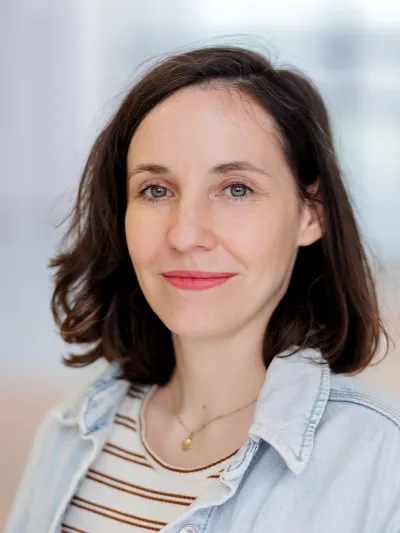Interview
"Crowdfunding takes Courage – and a good Story" – Interview with Sophie Gnest from Startnext

What does it take for a crowdfunding campaign in the cultural sector to succeed? Why is it worth relying on your own community even when resources are scarce? Sophie Gnest is a designer, entrepreneur and crowdfunding consultant at Startnext. In our training course "Cultural financing – basics, strategy, practice", she provides insights into innovative financing methods for cultural projects. In this interview, she talks about personal learnings, common stumbling blocks – and why crowdfunding is much more than just a pot of money.
JS: Sophie Gnest, you have been working as a consultant at Startnext for several years. What fascinates you personally about crowdfunding?
SG: What fascinates me personally about crowdfunding is that lots of small donations can make a big project possible and that startups can realise projects with us that they wouldn't be able to get off the ground so easily on their own. It's also about much more than just financing a project: the campaign is a huge lever for attention and visibility and can trigger a lot of resonance! A campaign that is communicated effectively to the outside world arouses curiosity, generates excitement, strengthens and expands the community surrounding the project. It's about the people behind an idea, about real emotions, about success and about failure – both are allowed and are important, because starters can recognise how much potential their project has at an early stage through feedback.
JS: You launched your company yourself with a crowdfunding campaign pack&satt with a crowdfunding campaign. What experience from your own campaign do you bring to your consultancy today?
SG: I can't emphasise often enough how crucial it is to take the crowd along on the journey, to create a communication plan in advance and, in particular, to prepare the campaign launch in such a way that as many people as possible support it at the start. At the same time, I myself know how challenging it can be to communicate continuously and stay on the ball, especially when fewer supporters come in in the middle of the campaign. On average, it takes up to seven speeches before people are convinced to give their support. Perseverance pays off at the end of the campaign, when more people support again as time is running out. I can really empathise with the people who started the campaign, because on the one hand it's motivating to communicate your idea personally and transparently to the outside world. But that can also raise doubts. I want to convey to starters that such challenges are part of inner and outer growth and the crowdfunding process. It's always so nice for me to see when projects make courageous progress and I want to encourage these courageous starters as a project advisor.
JS: Many players in the cultural sector are familiar with crowdfunding, but are unsure whether it is the right financing strategy for their project. How can you recognise whether crowdfunding is suitable?
SG: Crowdfunding is a valuable and effective financing instrument, especially for cultural professionals. Whether money is raised together for venues, artists or a book series – culture always thrives on people's enthusiasm. In times of declining cultural funding, a crowd can offer the opportunity to realise cultural projects together. Visitors to a theatre play or fans of an indie band can support a project even before it is realised, which reduces the financial risk for cultural professionals. For example, tickets for a premiere or cinema screening can be sold before the film is completed. At the same time, crowdfunding offers an excellent opportunity to tell your own story and build a community.
JS: What challenges do you often encounter when advising cultural projects – and how can these be overcome?
SG: A current problem in the cultural sector is the reduction in funding, which leads to reduced motivation and less security for cultural professionals. It is particularly challenging when the target group is not financially strong – which is often the case with many cultural projects. Creative approaches are therefore needed to appeal to less affluent or additional, committed target groups, such as the introduction of solo tickets or exclusive thank-you offers. In addition, the limited reach of many cultural projects is becoming a hurdle, which is why it is crucial to increase visibility and gain a broader supporter base through targeted marketing strategies, clever social media activities and strategic partnerships.
JS: Is there a particularly inspiring cultural project that you have recently supported on Startnext?
SG: A current and particularly inspiring project that I was able to support is Circus Garden. In the rousing pitch video, the starters show the vision of the project in a personal and performative way, which creates a connection and motivates people to support it – a great example of how crowdfunding can help to realise creative and socially valuable projects.
The interview was conducted by Julia Sammler.
Fancy further training?
Sophie Gnest will be part of our 5-day training course from the 25th of September "Cultural financing – basics, strategy, practice". Learn how to develop your own financing concept – practical, compact and application-orientated. Zoom info evening on the 3rd of June, 6.00 pm.
